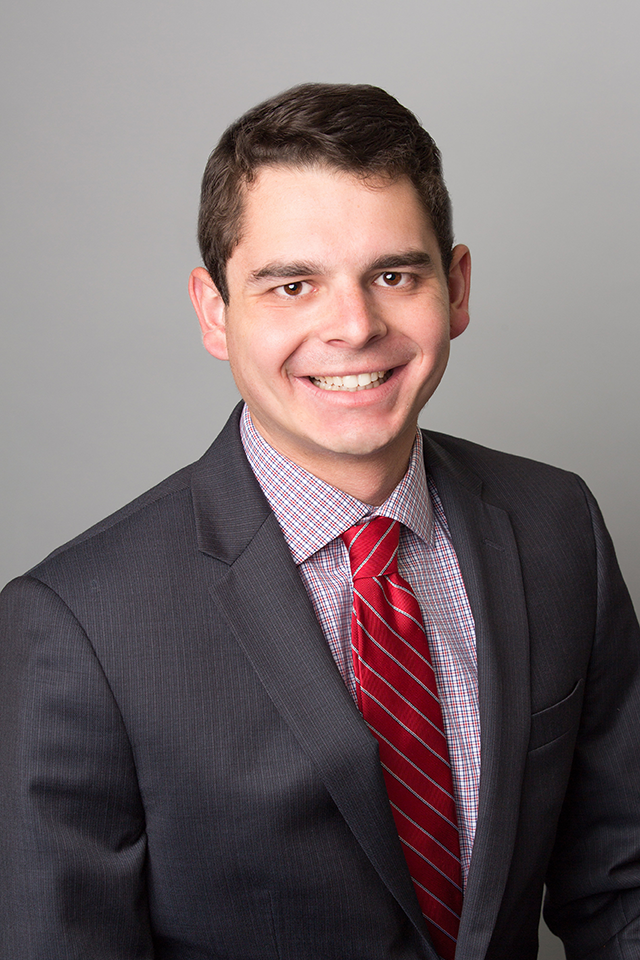
By Daniel Kusmin, Risk Consultant, Cobbs Allen
When the U.S. Government Accountability Office (GAO) published its report “Undercover Testing Finds Colleges Encouraged Fraud and Engaged in Deceptive and Questionable Marketing Practices” in August of 2010,1 an increased and ongoing level of scrutiny was put on the proprietary school sector. Combined with criticism from state attorneys generals, the U.S. Department of Justice, and politicians, the sector saw a large influx of lawsuits.
These lawsuits have resulted in hundreds of millions of dollars in legal and settlement expenses and have been the contributing factor to some of the largest schools shutting their doors for good.
Notable schools that have closed are Corinthian Colleges and ITT Technical. Recently, ITT Technical’s former CEO Kevin Modany and eight other senior-level executives at the school were individually named in a lawsuit by the Chapter 7 bankrupt trustee demanding $250 million.2 The lawsuit claims that, among other things, ITT’s executives breached their fiduciary duties: by failing to properly negotiate with their accrediting body ACICS, failing to investigate ITT’s financial solvency, and failing to successfully wind down ITT’s operations in a manner that both protected students and shareholders. These claims, while independent to ITT, highlight some of the unique issues and risk that directors and officers of proprietary schools’ face.
What is directors and officers insurance?
On the surface directors and officers (D&O) insurance is exactly what it sounds like, insurance to protect the board of directors and the officers of a business. Historically, D&O insurance was only for the D&O of publicly traded companies. Its main purpose was to protect the executives of a business when they acted negligently as the fiduciary to the shareholders. Today, D&O insurance has adapted to provide coverage for public and private companies. A standard policy is broken into three separate insuring agreements: Side A, Side B and, Side C. Side A coverage of a D&O policy protects the board and executives specifically for a “wrongful act” that is not indemnifiable by the corporation. Side B provides coverage for the entity when they do have to indemnify the directors & officers for a “wrongful act.” Finally, Side C provides coverage for the entity itself for a “wrongful act.”
Public companies’ entity coverage is typically only available for securities claims. In contrast, private companies’ entity coverage is written to be much broader and provide protection to the balance sheet for numerous incidents. Additionally, private company entity coverage is not limited to a “wrongful act” that results in a lawsuit. It will often cover “wrongful acts” that result in “written demands for monetary, nonmonetary or injunctive relief” and “a civil, criminal, administrative, regulatory or arbitration proceeding for monetary, nonmonetary, or injunctive relief.” In some cases, courts have upheld that private company entity coverage will respond to a governmental subpoena or a civil investigative demand, Richardson Electronics, LTD. V. Federal Insurance Co.3 caused by a “wrongful act.”
The definition of a “wrongful act” is vague in wording and varies between insurers. A sample definition of a “wrongful act” is, “any actual or alleged act, error, omission, misstatement, misleading statement or breach of duty, or neglect by, or any matter asserted against, an Insured Person in his or her capacity as such.”
The vagueness of the insuring agreement allows the scope of coverage to be very broad in nature, however; insurance carriers follow the insuring agreement with an average of 40-50 exclusions.
These exclusions pick away coverage and leave the scope of what is truly covered under a D&O policy much narrower. The issue in the proprietary school space is often what is included in that narrow scope of coverage is not where the school’s risk lies.
Issues with D&O coverage in the proprietary school sector
The proprietary school sector faces a unique risk for a multiple of reasons: they accept Title IV funding, they provide a professional service, they are heavily regulated by the government, and they must be compliant with a variety of accreditors. These industry-specific risks cause issues with coverage being triggered under a D&O policy if the policy is improperly designed.
In a bankruptcy situation, individual directors and officers can be personally liable as the fiduciary for Title IV funding the school accepts. Protection for these lawsuits are unlikely to be found in a business’s standard D&O policy, because of the governmental funding exclusion, but can be found in a Side A (coverage for the D&Os themselves) difference in conditions (DIC) policy. A Side A DIC policy is normally a separate policy from the standard D&O policy that includes Side ABC insuring agreements. Side A DIC policies provide extra limits for the directors and officers themselves and are written to be broader in coverage. Companies will often build towers of multiple Side A policies to provide limits to their directors and officers that reach the tens of millions. These towers are considered bankruptcy coverage and are likely what the executives in a case like ITT will depend on in their current lawsuit.
Proprietary schools provide a professional service to their students, to educate them. Lawsuits surrounding a proprietary school’s failure to educate are actually quite rare. Most lawsuits are claims that colleges misled prospective students in job placement statistics, breached a student contract and used predatory marketing tactics to get a student to enroll.4 Most D&O policies will exclude coverage “based upon, arising from, inconsequence of, or in any way directly or indirectly related to the rendering or failure to render professional services” leaving a potential significant coverage gap for colleges. A recent example of this gap in coverage being exploited is in California when the Ninth Circuit court of appeals denied that there was coverage for HotChalk on their D&O policy because of the professional service exclusion.5 HotChalk is a business that helps online colleges recruit students and was alleged to be paying commission to recruiters.6 Because the lawsuit occurred during HotChalk’s rendering of professional services, no coverage was triggered under their D&O policy. Insurers include the professional services exclusion to carve out coverage for what in nature should be covered by a separate policy, a professional liability/errors and omissions (E&O) policy, also known as an educator’s malpractice policy. However, adding an E&O policy in the proprietary school space to fill the gap in coverage left from the professional services exclusion, does not provide protection for the lawsuits that are the most common in this space, because they are not a failure to educate, but other failures.
Where the issue arises in adding an E&O policy in the proprietary school sector is, as mentioned above, most claims are claims that the school used deceptive and predatory recruiting practices, breached student contracts and made false/fraudulent claims.
An E&O policy is only going to cover and defend the school on the part of the lawsuit that deals with the failure to educate.
Additionally, educational malpractice claims have almost been universally rejected by American courts.7 The solution to covering these claims is to remove the professional services exclusion on the D&O covering D&O and E&O claims in one policy. Additionally, the D&O policy needs to remove the antitrust exclusion, amend the definition of a loss, and have a carve back on the breach of contract exclusion.
The antitrust exclusion in a D&O policy excludes coverage for common law governing competition and includes three of the larger federal acts that were passed during the Progressive Era in American history, the Sherman Antitrust Act of 1890, the Clayton Act of 1914 and the Federal Trade Commission Act of 1914. The exclusion is written so broad that it also includes “or any other federal, state or local securities law, including any amendments thereto.” Included in the Federal Trade Commission Act of 1914 and many state and local securities laws are statues that prevent unfair or deceptive acts that affect consumers.8 If this exclusion is not removed on a D&O policy, lawsuits that claim schools used deceptive advertising to entice students to enroll will be not be covered.
Often, when proprietary schools face lawsuits from their student body, included in the students’ demand is to have their tuition and fees returned to them. When the Charlotte School of Law was facing a class action lawsuit in January 2017, Barchiesi v. Charlotte School of Law,9 the plaintiffs were seeking $5 million in damages for more than 100 class members. The lawsuit was made on the claim “for false and misleading representations and omissions related to Defendants’ failure to provide current and prospective CSL students with information about CSL’s noncompliance with American Bar Association (“ABA”) standards for accreditation.”10 A properly set up D&O policy with the professional services and antitrust exclusions removed would respond to this lawsuit. The problem occurs if the Charlotte School of Law is ordered by the court to pay the damages. In most D&O policies the definition of a loss excludes fees. An example from one D&O policy, “loss does not include any amount that constitutes the return or disgorgement of fees or any other compensation paid to the Insured.” The previous statement will preclude the D&O carrier paying for the portion of the damages that is directly tied to students requesting their tuition and fees to be reimbursed. Many D&O carriers are reluctant to remove this clause in the policy, but it is possible and will provide full coverage for the lawsuit outlined above.
In all higher education, it is not uncommon for students to sue their institutions on the basis that the college or university breached the student contract.11 Similar to lawsuits regarding educator’s malpractice, courts have historically sided with the institutions in these cases because of the ambiguity surrounding how to educate and academic standards. D&O policies will include breach of contract exclusions but will carve back coverage for breach of a student contract.
In conclusion, the higher education space faces a unique set of risks that are not usually adequately addressed in most directors and officers policies. It is increasingly important to understand these risks thoroughly as well as understand how a D&O policy will respond.
References
- https://www.gao.gov/products/GAO-10-948T
- https://www.republicreport.org/wp-content/uploads/2018/06/Trustee-ITT-complaint.pdf
- https://www.pillsburylaw.com/en/news-and-insights/reality-check-private-companies-need-directors-and-officers.html
- https://www.chronicle.com/article/3-Startling-Claims-From/241924
- https://cdn.ca9.uscourts.gov/datastore/memoranda/2018/06/04/16-17287.pdf
- https://www.dandodiary.com/2018/06/articles/d-o-insurance/ninth-circuit-professional-services-exclusion-precludes-insurance-coverage/
- https://www.americanbar.org/groups/litigation/committees/mass-torts/articles/2014/fall2014-1014-identifying-defending-claim-educational-malpractice.html
- https://www.ftc.gov/enforcement/statutes/federal-trade-commission-act
- http://www.abajournal.com/news/article/student_lawsuits_against_charlotte_school_of_law_consolidated
- http://www.abajournal.com/files/Barchiesi_v_CSL_amended_complaint.pdf
- https://www.nisarlaw.com/blog/2013/august/implied-contracts-and-breach-of-contract-in-high/
DANIEL KUSMIN comes to Cobbs Allen from Lockton Companies, where he served as an associate account manager for two years. He has his Associate in Risk Management (ARM) designation. He sits on the junior board for Big Brothers and Big Sisters of Kansas City. Daniel has a bachelor’s degrees in finance with a minor in economics from the University of Kansas.
Contact Information: Daniel Kusmin // Risk Consultant // Cobbs Allen // 913-832-8878 // dkusmin@cobbsallen.com // cobbsallen.com // https://www.linkedin.com/in/daniel-kusmin-3a10bb40/

